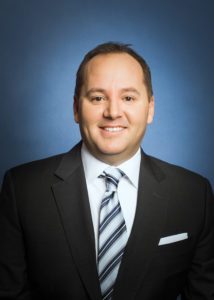For years, business leaders have been told to prepare for the most age-diverse workforce in history—and now it’s here. While today’s multigenerational workforce may be challenging HR leaders on several fronts, strategy is particularly needed in the benefits space, according to a new survey.
Bradd Chignoli, head of U.S. Group Benefits National Accounts and Financial Wellness & Engagement at MetLife, says the global insurance provider’s 2023 Employee Benefit Trends Study identified the evolving needs of today’s increasingly diverse workforce. MetLife’s study, conducted with Rainmakers CSI—a global strategy, insight and planning consultancy—included 2,650 interviews with full-time U.S.-based employees aged 21 and over.
According to the research, the most critical overall factor for satisfied, engaged and loyal employees is a personalized benefits strategy—where communication is critical.
Personalizing benefits for a multigenerational workforce
Today’s workforce is more multi-dimensional than ever: From millennials and Gen Zers navigating parenthood to Gen X caring for aging parents, employees are approaching various life milestones and looking for benefits that meet their distinct needs.
MetLife’s research, in fact, found that 54% of employees wish they had personalized benefit recommendations, and four in 10 employees don’t feel their benefits are relevant to them.

“Clearly, to ensure all generations feel supported, employers and HR decision-makers must meet employees where they’re at with tailored solutions,” he says.
Apart from specific benefits offerings, Chignoli says, it’s “paramount” that HR deliver “actionable, integrated benefits recommendations across a full suite of products” tailored to individuals’ preferences and life needs in order to create “targeted, effective solutions that resonate across a multi-dimensional workforce.”
Shifting to an always-on benefits communications plan
According to MetLife, 65% of employees want their employer to communicate with them about benefits both during and after open enrollment. Gen Z sets the standard for this level of communication, who are more likely than other generations to crave ongoing communication about benefits.
See also: 8 benefits areas HR is focusing on in 2024
“Clarity at time of enrollment helps set the stage for initial awareness, but communications shouldn’t stop there, as employees may need support when accessing and using their benefits, or simply forget to use them,” Chignoli says.
Also, “always-on” communication enables HR and benefits professionals to help employees choose benefits most relevant to their individual needs and utilize them to their fullest value throughout the year.
Chignoli says taking an audience-specific approach to benefits education is also important for HR. For example, he notes that half of employees say having a better understanding of their benefits would make them more loyal.
“At the same time, the data also indicates cohorts have varying levels of benefit comprehension, and this is a critical barrier for utilization that employers need to address,” he says. “Educating each employee on ways to maximize the value of their elections requires employers first to identify knowledge gaps within each generation.”
For example, Gen Z employees may be less familiar than older workers with health savings accounts (HSAs) and flexible spending accounts (FSAs). Meanwhile, Baby Boomers and Gen X may be more interested in learning about retirement accounts to help with long-term planning and financial security.
“Providing educational resources and tailored learning opportunities across all generations of employees can improve employee decision-making, boost benefits usage and, in turn, increase retention,” Chignoli says.

